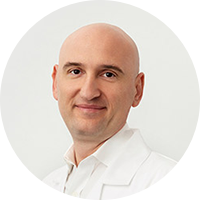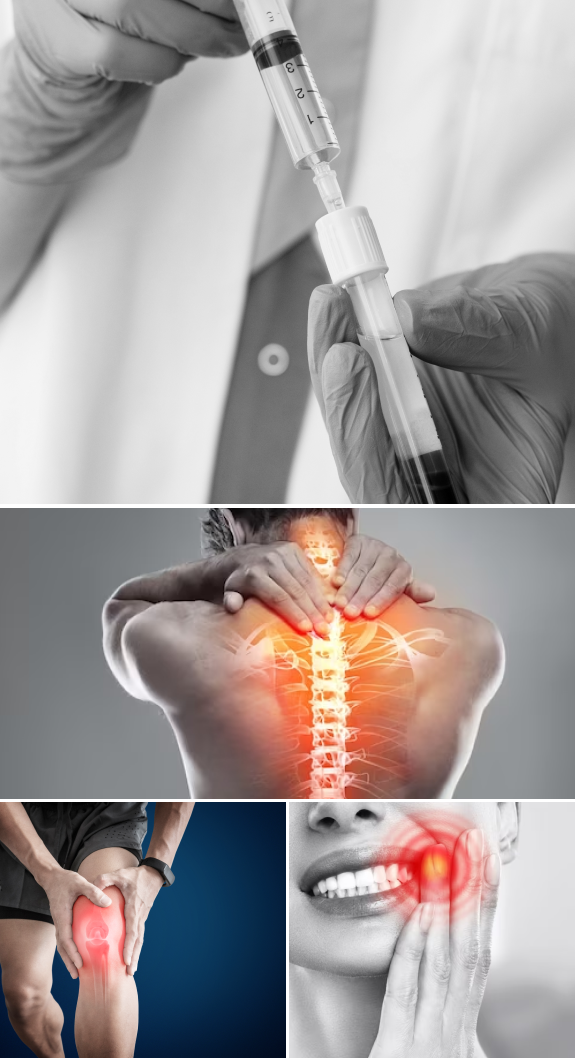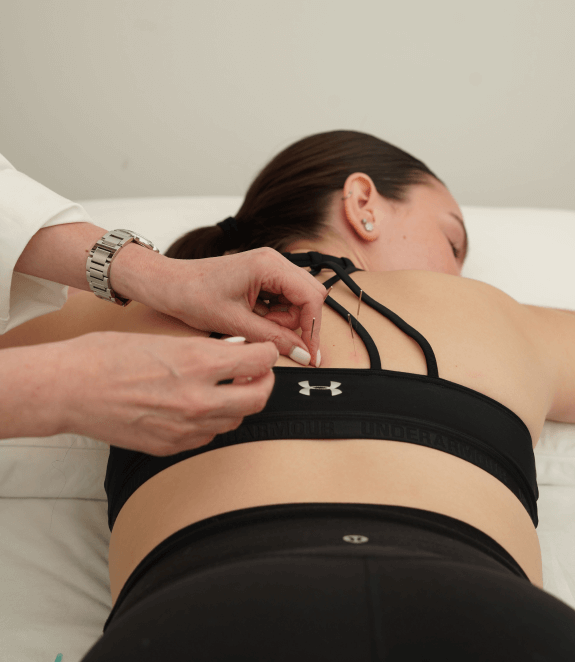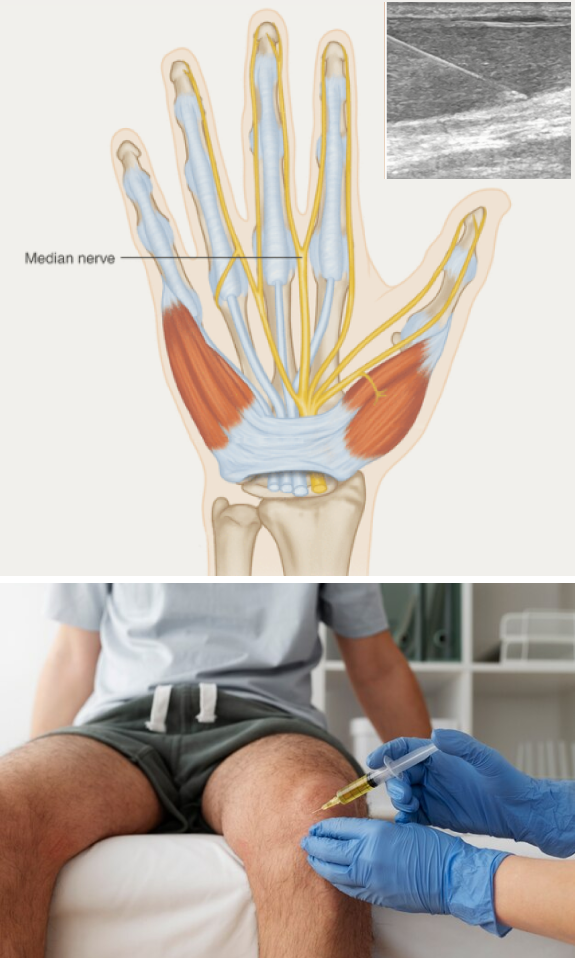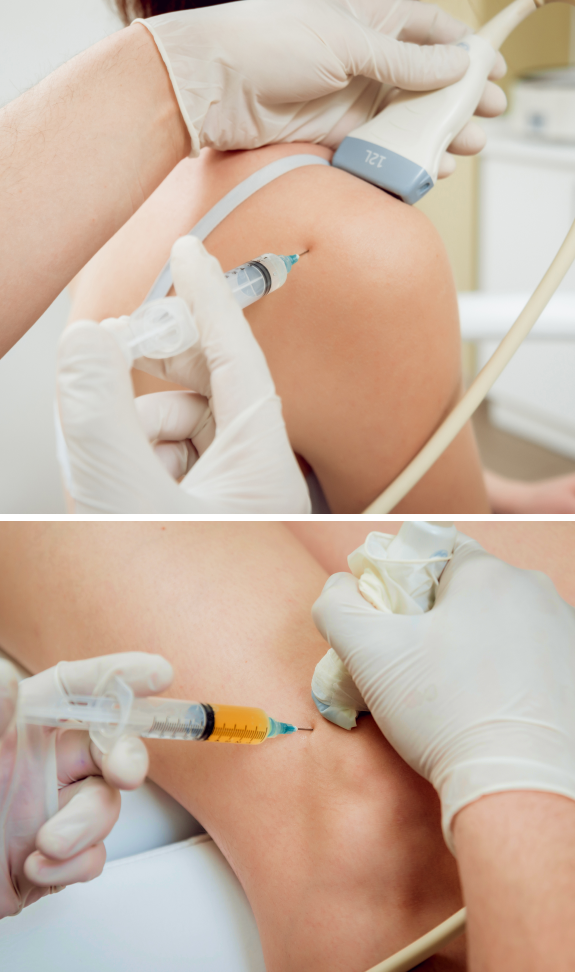Hyaluronic Acid Injections
What it does: An injection of hyaluronic acid into an arthritic joint promotes fluid joint movement, reduces pain and prevents the progression of arthritis.
How it works: Hyaluronic acid is a natural component of joint synovial fluid, that acts to lubricate the joint and provides shock absorption. In arthritic patients, hyaluronic acid tends to break down, leading to pain and reduced mobility. Hyaluronic acid injections can help restore movement and relieve joint pain.
The procedure: Typically, the patient receives a series of three hyaluronic acid injections, performed over three consecutive weeks. The injections are guided by ultrasound to ensure that hyaluronic acid is released into the joint capsule. The procedure may be repeated every six to 12 months.
Corticosteroid Injections
What it does: A corticosteroid is a powerful anti inflammatory drug used to target localized pain in joints and surrounding soft tissues.
How it works: When injected into the painful region, corticosteroids go to work to reduce pain and inflammation, enabling the patient to move more freely, and to participate in physical therapy.
The procedure: Under the guidance of ultrasound, an injection of corticosteroid solution is made through the skin, into the affected joint.


